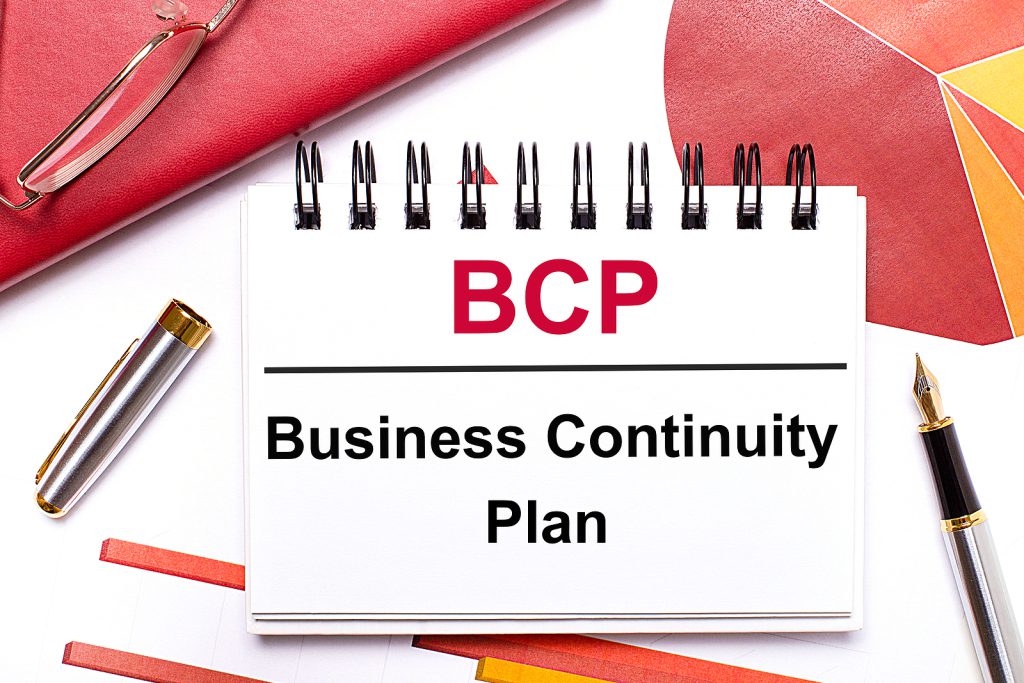מאמר זה יעסוק בבניית תכנית המשכיות עיסקית | קיימות עיסקי| מדוע מוכרחת לעסק
דירקטוריון TABX –
הוא ארגון בלעדי, מבוסס חברות, המסייע לבעלי עסקים ומנהיגים עסקיים אחרים להשיג יותר – יותר רווחיות, פרודוקטיביות והגשמה אישית.
אנו עושים זאת באמצעות שילוב ללא תחרות של תובנות בין עמית לעמית, אימון עסקי עם מאמנים מוסמכים של TAB וכלים ומשאבים קנייניים של TAB המחברים בין בעלי עסקים לאלפי עמיתיהם ברחבי העולם.
באמצעות פלטפורמת הידע וההדרכה שלנו, TAB מספקת עצות בעולם האמיתי שמבטיחות תוצאות אמיתיות על ידי סיוע לבעלי עסקים להישאר ממוקדים במה שחשוב ביות

כל מה שרצית לדעת על תכנית המשכיות עיסקית
למה בהחלט, ללא ספק, בנחרצות, צריך תוכנית המשכיות עסקית
תוכנית המשכיות עסקית (BCP) היא אחד מאותם דברים שקל להתעלם מהם עד שמתרחש אסון ולחברה נותרת לברוח בדרכה להתאוששות. או גרוע מכך, העסק פשוט קורס בגלל חוסר מוכנות ותכנון. כן, זה התרחיש הגרוע ביותר, אבל כשנוף האיומים הנוכחי הוא מה שהוא, התחזית העגומה אינה היפרבולית בשום אופן.
לפי הממשל האמריקאי (סוכנות FEMA ), 40% מהעסקים הקטנים והבינוניים (SMBs) לעולם אינם נפתחים מחדש לאחר אסון, ועוד 25% נכשלים תוך שנה. מספרים מדהימים, והם נוגעים רק לאיומים סביבתיים כמו , סופות, שריפות ורעידות אדמה. אבל מה לגבי איומי סייבר? התקפות כופר הן ללא ספק מגיפה ומביאות עסקים בריאים על ברכיהם, גם לאחר שהאקרים מקבלים תשלום. מומחי אבטחת סייבר מדווחים כי 60% מהעסקים הקטנים יוצאים מהעסק תוך שישה חודשים לאחר מתקפת סייבר או פרצת נתונים.
בעלי עסקים רבים מאמינים בקוצר רואי שתוכנית ההתאוששות שלהם מאסון מספיקה כדי להגיע לצד השני של אירוע קטסטרופלי. אבל המשכיות עסקית והתאוששות מאסון הם לא אותו דבר. מטרת BCP היא לשמור על עסק תפעולי לאורך כל אסון, בעוד שהתאוששות מאסון נוגעת לשחזור נתונים ותשתיות IT לאחר אירוע הרסני. התאוששות מאסון היא למעשה תת-קבוצה חיונית של BCP מקיף.
אז עכשיו זה הזמן להפוך את המוכנות לאסונות בראש סדר העדיפויות בעסק שלך.
10 אסונות פוטנציאליים העומדים בפני עסקים קטנים, רשימת מצבי החירום
הפוטנציאליים היא עצומה, אך רוב האירועים השליליים נופלים בתוך או בסמוך לתנאים הבאים:
• התקפות סייבר, וירוסי מחשב והפרות נתונים
• מגיפות גלובליות
• אסונות טבע כולל שריפות, שיטפונות, הוריקנים, סופות טורנדו ורעידות אדמה
• סופות חורף או גלי חום
• הפסקות חשמל
• הפרעות עקב טעות אנוש
• חבלה בעובדים
• ציוד מיושן ותקלות מערכת בלתי צפויות
• הפרעות בשרשרת האספקה
• מצבי בני ערובה
• פעולות טרור
המטרה של תוכנית המשכיות עסקית
BCP היא תוכנית פעולה מתועדת שנועדה למזער את זמן ההשבתה הנגרמת כתוצאה מאירוע שלילי ולהבטיח שהפעולות יתנהלו בצורה חלקה ככל האפשר עד שמערכות סטנדרטיות יחזרו לפעול. BCPs פועלים כמדריך הכולל פעולות מקיפות בצד החברה וגישות לתרחישי אסונות רבים. המטרה של BCP היא למזער את ההסתברות להפרעות עסקיות, להכיל את האיום ככל האפשר, ולשחזר את הפעולות הסטנדרטיות לאחר אירוע בצורה יעילה ואפקטיבית ככל האפשר.
5 השלבים הראשונים ליצירת תוכנית המשכיות עסקית
עיצוב תוכנית המשכיות עסקית יעילה יכולה להיות משימה ענקית, ולכן חברות רבות בוחרות לערב מומחי BCP. חברות אבטחת סייבר כוללות לרוב שירותי BCP שאינם מוגבלים רק לאיומי טכנולוגיה
עיצוב תוכנית המשכיות עסקית יעילה יכולה להיות משימה ענקית, ולכן חברות רבות בוחרות לערב מומחי BCP. חברות אבטחת סייבר כוללות לרוב שירותי BCP שאינם מוגבלים רק לאיומי טכנולוגיה.
בעלי עסקים שמוכנים ליצור BCP באמצעות המשאבים הפנימיים שלהם צריכים לשקול את הדברים הבאים:
1. אסוף צוות. זהה ראשי מחלקות ויועצים מהימנים שיכולים לעזור לך לדמיין ולמפות את התנועה של אנשים ותהליכים. זה יהיה צוות ניהול המשכיות עסקית שלך.
2. זיהוי סיכונים פוטנציאליים. זה יכול לתפוס בעלי עסקים לא מוכנים, כשהם נכנסים לפרויקט בציפייה לקומץ של תרחישי איום, אבל מבינים במהירות שיש הרבה יותר סיכונים פוטנציאליים מהצפוי. חפרו לעומק עם צוות ניהול ההמשכיות העסקית שלכם ובצעו מחקר מקוון על אירועי חירום אחרונים.
3. תעדוף את בטיחות העובדים. בעוד שפעולות עסקיות חשובות, כל BCP צריך לשקול קודם כל את בטיחות העובדים ורווחתם. התחל ביצירת רשימה של כל עובד, יחד עם פרטי התקשרות. כלול מחלקות ולמי הן מדווחות.
4. תכנון המשכיות ואסטרטגיות התאוששות. זה המקום שבו אתם מציבים תרחישי איום, קובעים כיצד תעמדו בביקוש המבצעי או תפחית אובדן, ותמפה דברים כמו פינוי או הנחיות הישארות במקום, ערוצי תקשורת חירום, אמצעי עצירה מבצעיים וכדומה. צפו לבזבז כמות ניכרת של זמן בתכנון המשכיות.
5. בדוק את ה-BCP שלך. לאחר השלמתו, יש להעריך כל תרחיש ב-BCP שלך לגבי היתכנות, יעילות ובטיחות. קבל רכישה מהצוות שלך ושמור על אוזן קשבת להצעות ושינויים.
אמנם כיסינו כאן הרבה אדמה, אל תטעו, זה רק קצה הקרחון. יצירת תוכנית המשכיות עסקית היא משימה די גדולה שדורשת הרבה מאוד הון עצמי ומחשבה מוקדמת.
מעוניין בצלילה עמוקה יותר ליצירת BCP עבור העסק שלך?
לחץ כאן אם תרצה שנשלח לך את הספר הלבן הקרוב לתכנון המשכיות עסקית, זמין בהמשך הקיץ. השלם את שדות אנשי הקשר והזן "אנא שלח לי את ה-BCP הלבן שלך" בקטע ההערות. נשלח לך מייל ברגע שזה יהיה מוכן..
Why You Absolutely, Positively, Without a Doubt Need a Business Continuity Plan
A Business Continuity Plan (BCP) is one of those things that are easy to overlook until disaster strikes and a company is left to spitball its way to recovery. Or worse, the business simply collapses due to a lack of preparedness and planning. Yes, that is the worst-case scenario, but with the current threat landscape being what it is, the grim outlook is not hyperbolic by any means.
According to FEMA, 40% of small and mid-sized businesses (SMBs) never reopen after a natural disaster, and another 25% fail within a year. Staggering numbers, and they only pertain to those environmental threats like hurricanes, tornadoes, fires, and earthquakes. But what about cyberthreats? Ransomware attacks are arguably an epidemic and are bringing otherwise healthy businesses to their knees, even after hackers are paid. Cybersecurity experts report that 60% of small business go out of business within six months of a cyberattack or data breach.
Many business owners shortsightedly believe that their Disaster Recovery Plan is enough to make it to the other side of a catastrophic event. But business continuity and disaster recovery are not the same thing. The purpose of a BCO is to keep a business operational throughout a disaster, while Disaster recovery pertains to the restoration of data and IT infrastructure after a destructive event. Disaster recovery is in fact an essential subset of a comprehensive BCP.
So now is the time to make disaster preparedness a priority in your business.
10 Potential Disasters Facing Small Businesses
The list of potential emergencies is enormous, but most negative events fall within or adjacent to the following:
- Cyberattacks, computer viruses, and data breaches
- Global pandemics
- Natural disasters including fires, floods, hurricanes, tornadoes, and earthquakes
- Winter storms or heat waves
- Power outages
- Interruptions due to human error
- Employee sabotage
- Outdated equipment and unforeseen system failures
- Supply chain interruptions
- Hostage situations
- Acts of terrorism
The Purpose of a Business Continuity Plan
A BCP is a documented action plan designed to minimize downtime caused by a negative event and ensure operations run as smoothly as possible until standard systems are up and running again. BCPs act as a guide that includes comprehensive, company-side actions and approaches to numerous disaster scenarios. The goal of a BCP is to minimize the probability of business interruptions, contain the threat as much as possible, and restore standard operations after an incident as efficiently and effective as possible.
First 5 Steps to Creating a Business Continuity Plan
Designing an effective Business Continuity Plan can be a huge undertaking, so many companies opt to engage BCP experts. Cybersecurity firms often include BCP services that are not just limited to technology threats.
Business owners who are willing to create a BCP using their internal resources should consider the following:
- Gather a Team. Identify department leaders and trusted advisors who can help you visualize and map the movement of people and processes. This will be your Business Continuity Management Team.
- Identify potential risks. This one can catch business owners off guard, as they go into the project expecting a handful of threat scenarios, but quickly realize there are many more potential risks than anticipated. Dig deep with your Business Continuity Management Team and conduct online research on recent emergency events.
- Prioritize employee safety. While business operations are important, every BCP should consider employee safety and wellbeing first. Start by creating a list of every employee, along with contact details. Include departments and who they report to.
- Design continuity and recovery strategies. This is where you pose threat scenarios, determine how you will meet operational demand or mitigate loss, and map out things like evacuation or remain-in-place directives, emergency communication channels, operational stop-gap measures, and the like. Anticipate spending a substantial amount of time on continuity design.
- Test Your BCP. Once completed, every scenario in your BCP should be evaluated for feasibility, efficiency, and safety. Get buy-in from your team and keep an open ear for suggestions and modifications.
While we covered a lot of ground here, make no mistake, this is just the tip of the iceberg. Business Continuity Plan creation is a pretty big undertaking that takes a great deal of sweat equity and forethought.
Interested in more of a deep dive into creating a BCP for your business?
Click here if you would like us to send you our upcoming Business Continuity Planning whitepaper, available later this summer. Complete the contact fields and enter “Please send me your BCP whitepaper” in the comments section. We will send you an email as soon as its ready.

אשמח לענות על כל שאלה, ניר מקובסקי – ייעוץ עסקי לחברות | דירקטוריון חלופי | TAB

